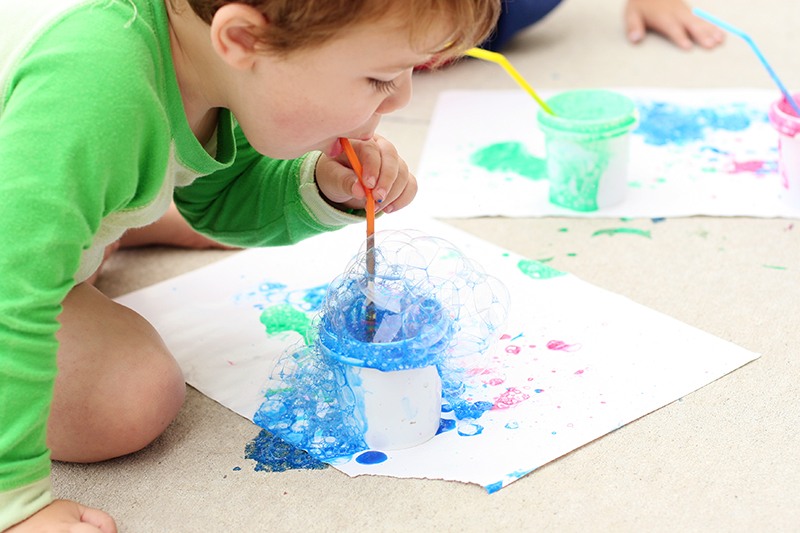Once upon a time, in a cozy classroom filled with the giggles of tiny tots, a wise teacher named Ms. Lily discovered the magic of creativity. She watched as little Emma dipped her chubby fingers into vibrant paints, transforming a blank canvas into a swirling rainbow of dreams. Beside her, young Alex molded clay into fantastical creatures, his imagination soaring like a bird in the sky. Through these simple moments, Ms. Lily realized that art activities with preschoolers weren’t just play—they were gateways to wonder, learning, and endless possibilities. This story sets the stage for our exploration into the world of artistic adventures designed especially for the youngest learners.
The Benefits of Art Activities with Preschoolers
Engaging preschoolers in art isn’t just about making messes (though that’s part of the fun!); it’s a foundational step in their development. These activities foster essential skills that extend far beyond the art table.
Cognitive Development Through Creativity
Art activities with preschoolers stimulate brain growth by encouraging problem-solving and critical thinking. For instance, when children mix colors to create new shades, they’re experimenting with basic science concepts like cause and effect. Research shows that such hands-on experiences enhance spatial reasoning and pattern recognition, skills crucial for early math and reading readiness.
Emotional and Social Growth
Preschoolers often struggle to express their feelings verbally, but art provides a safe outlet. Drawing a “happy sun” or a “sad cloud” helps them articulate emotions, building emotional intelligence. Group art projects also promote sharing, turn-taking, and collaboration, laying the groundwork for social skills they’ll use throughout life.
Easy and Fun Art Activities with Preschoolers
Now that we’ve covered the why, let’s dive into the how. These activities are simple, affordable, and can be done at home or in a classroom setting, using everyday materials.
Finger Painting Adventures
Start with the classics: finger painting. All you need is non-toxic washable paints, paper, and a willingness to get a bit sticky. Encourage preschoolers to create scenes from their favorite stories, like painting a farm with animals. This activity boosts fine motor skills as they swirl and dot the paint, and it’s a sensory delight that engages touch and sight.
Nature-Inspired Collages
Take the fun outdoors by collecting leaves, twigs, and flowers during a short walk. Back inside, let the kids glue these natural items onto cardboard to make collages. Add crayons or markers for extra flair. This not only teaches about textures and colors but also connects children to the environment, sparking curiosity about the world around them.
Clay Modeling Magic
Sculpting with playdough or air-dry clay is perfect for building hand strength and imagination. Guide preschoolers to shape simple objects like balls, snakes, or even their own “monster friends.” For added learning, incorporate themes like animals or vehicles, which can tie into storytelling sessions afterward.
Tips for Successful Art Sessions
To make art activities with preschoolers truly effective and enjoyable, a few strategies can go a long way.
Setting Up a Creative Space
Designate a kid-friendly area with easy-to-clean surfaces, smocks, and organized supplies. Keep tools like scissors (safety ones, of course) and brushes within reach but supervised. This setup minimizes frustration and maximizes focus.
Incorporating Themes and Variations
Theme your sessions around seasons, holidays, or books to keep things fresh. For example, during fall, create leaf rubbings; in winter, make snowflake prints with white paint on blue paper. Adapt activities for different skill levels—simpler tasks for toddlers and more complex ones for older preschoolers.
Safety and Inclusivity Considerations
Always use age-appropriate, non-toxic materials. Be mindful of allergies, such as to gluten in homemade playdough. Ensure activities are inclusive for children with varying abilities, perhaps by offering adaptive tools like chunky crayons for those with motor challenges.
Conclusion
In wrapping up, remember that art activities with preschoolers are more than fleeting fun—they’re investments in a child’s holistic growth. From the storytelling spark in Ms. Lily’s classroom to the everyday wonders you can create at home, these experiences nurture imagination, confidence, and joy. So grab those paints, gather your little artists, and watch as their worlds expand one brushstroke at a time. Encourage ongoing exploration, and who knows? Today’s finger painter might be tomorrow’s innovative thinker.

